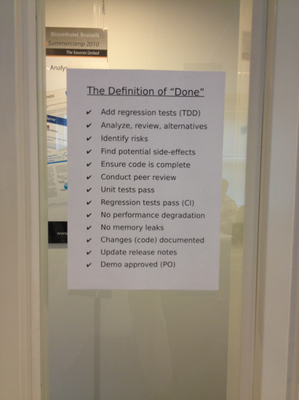Times are changing and it's up to us to adapt quickly before it is too late. Decades of experience with traditional plan-driven software development has proven it beyond a doubt. We cannot ignore the hard facts that (after-care) software maintenance costs are at least twice as much as the initial development costs. That is, depending on the quality of the software. Lousy software could cause a tenfold increase in bug-fixing et cetera after the fact, maybe more. Very dissatisfied customers will turn away in a blink of the eye when the competitor introduces the next best replacement.
Much too often have hastily created products been pushed into the market prematurely. Because of fear of the competition, more often than not an exaggeration if not a complete illusion. This viscous circle has led to situations where maintenance costs have skyrocketed and even the supposedly leading technology companies have gone under.
Take a moment and think about it logically. Why continue like this? Why not use agile as a maintenance-compatible software development process? It would secure the complete product life-cycle from start to finish. Maintenance and development would become one, the continuous delivery pipeline would carry us forward, and we would be part of the current. It would avoid two separate teams of two conflicting and disparate mechanisms by combining them into a single cohesive unit working in tandem in the software development factory. Galloping in cadence, achieving higher efficiency, and best of all reducing unnecessary costs. Life would certainly be better.
Unfortunately, the obvious advantages can only be proven empirically rather than theoretically. We choose the wrong split in the road despite the warning signs that are so clearly in front of us. The human mind requires a more (so-called) structured plan which predicts the future better. A magical looking glass that will tell us that indeed we are the fairest of the land in the wonderful world of software development. Even if in the end it gives us a false sense of security, at least it makes us feel better. Even if it means joining the herd of lemmings for the sake of following, just in case. Until we reach the end wherever that might be.















Recent Comments
- Charles
- jpmcfarlane
- Kiffin
- jpmcfarlane
- KathleenC